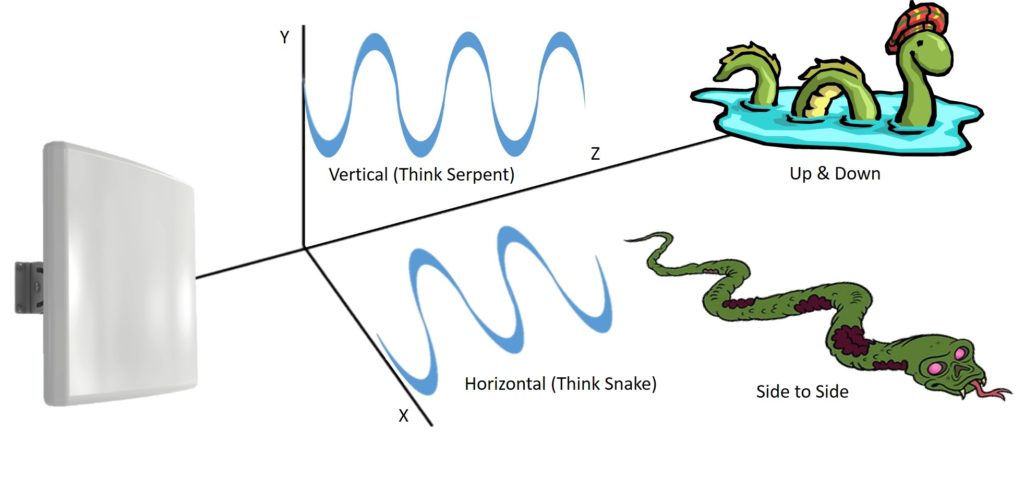High density is becoming the norm. Everyone has multiple devices traveling with them at all times and we all require more and more bandwidth. We have all been in situations where having no Wi-Fi is sometimes better than bad Wi-Fi. If you have Wi-Fi, it has to be good and support any and all applications that a device owner wants to run at any point in time. If not, it’s disappointing, frustrating and someone is going to hear about it.
So what you need is an edge. One way to achieve this edge is to minimize signal collisions to allow the radio to send and receive data faster and more efficiently. But how? By using dual polarity antennas. Brilliant. But what does this mean?
Traditionally, Wi-Fi antennas were built with vertically polarized antenna elements. The radio waves travel up and down. For all of our visual thinkers out there, imagine a serpent coming in and out of the water. Awesome.

What’s not awesome is that pretty much every other antenna and device using this frequency also travels this way. Collision city. And no bueno for your faster network needs. Imagine a whole lake full of serpents and they are all trying to get their morning swim on. They can’t ever get their heartbeat up because they can’t get any momentum without running into other serpents. Not ideal at all.
So what do we do? We take half of the serpents out of the lake and add in snakes.

Snakes move side to side, serpents move up and down. They are able to all get their swim on and navigate each other smoothly because the mechanics of their movements are different. And that, my dear friends, is how you avoid signal collisions in high density environments. You change the orientation of the elements so that some are serpents and some are snakes.

In more technical terms, this is called dual polarity. Each physical antenna will have 3, 4 or 6 baby antenna elements inside that radome. When you turn half of them 90 degrees, magic happens. You get serpents and snakes. Amazing.
Shameless plug happens now….
All AccelTex Solutions HD antennas are built with this design utilizing both vertical and horizontal antenna elements (serpents and snakes). It’s better in HD environments and that’s why we did it. Plain and simple.